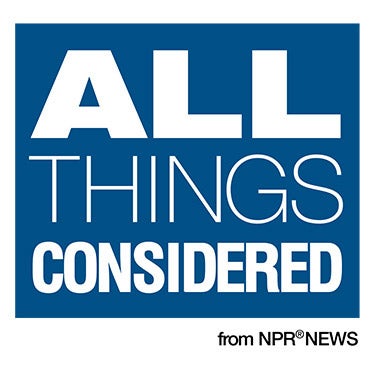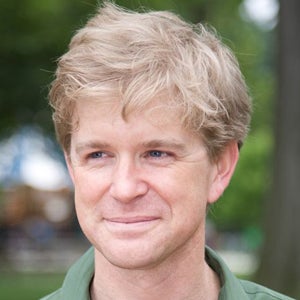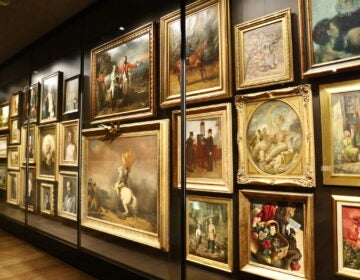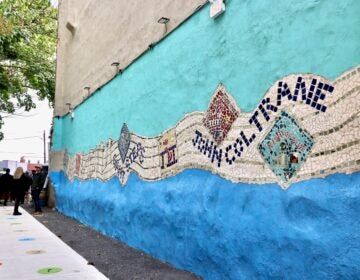Philadelphia’s bug house adds hermetically-sealed butterfly pavillion
-

A young visitor warily watches butterflies feeding on a dish of fruit. (Emma Lee/WHYY)
-

By February 23, 2017, the warehouse space at the Philadelphia Insectarium was transformed into the Butterfly Pavilion. (Emma Lee/WHYY)
-

Hundreds of butterflies fill the new pavilion at Philadelphia Insectarium. (Emma Lee/WHYY)
-

John Cambridge, CEO of the Philadelphia Insectarium and Butterfly Pavilion, is visited by a giant owl butterfly in the new pavilion. (Emma Lee/WHYY)
-

The giant owl butterfly is named for the large eyespots on it's underwing. (Emma Lee/WHYY)
-

On August 1, 2016, the future Butterfly Pavillion was a warehouse space at the Philadelphia Insectarium. (Courtesy of the Philadelphia Insectarium)
-

By February 23, 2017, the warehouse space at the Philadelphia Insectarium was transformed into the Butterfly Pavilion. (Emma Lee/WHYY))
-

Animal caretaker Alison Sander holds a butterfly for a reluctant young visitor. (Emma Lee/WHYY)
-

A longwing butterfly finds a meal. (Emma Lee/WHYY)
-

Butterflies flock to a tray of sliced fruit. (Emma Lee/WHYY)
-

A monarch butterfly emerges from its chrysalis in the butterfly hatchery. (Emma Lee/WHYY)
-

Butterflies congregate along the walkway at the Butterfly Pavilion. (Emma Lee/WHYY)
-

A blue morpho butterfly rests on a flowering plant. (Emma Lee/WHYY)
-

A clownfish swims in the salt water aquarium. (Emma Lee/WHYY)
-

A tutti frutti African clawed frog at the Insectarium's zoo. (Emma Lee/WHYY)
-

A thin layer of water covers a clear sphere in one of the Butterfly Pavilion's water features. (Emma Lee/WHYY)
-

Philadelphia Insectarium and Butterfly Pavilion CEO John Cambridge tends to a zoo that includes fish, lizards, and amphibians, as well as giant bugs. (Emma Lee/WHYY)
-

A leaf-tailed gecko in the Insectarium's zoo. (Emma Lee/WHYY)
-

Animal caretaker Alison Sander looks after some bearded dragons. (Emma Lee/WHYY)
-

An Insectarium worker prevents a giant centepede from leaving its container. (Emma Lee/WHYY)
-

The Philadelphia Insectarium on Frankford Avenue, has transformed, inside and out, adding a butterfly pavilion and other amenities. (Emma Lee/WHYY)
A bug museum in Philadelphia’s Holmesburg neighborhood has expanded its footprint to include one of the largest butterfly pavilions in the country.
The Insectarium & Butterfly Pavilion, on Frankford Avenue, wants to transform itself into the Franklin Institute of Northeast Philly.
It has taken over its neighbors property – a former storage warehouse for a landscaping company – and made it into a 7000 square foot butterfly playground. The roof has been replaced by semi-transparent plexiglass, it’s filled with flowering tropical plants, water fountains, fresh fruit for eating, moss-covered tunnels for hiding, and the whole thing is maintained at 80 degrees year-round.
The new CEO of the Insectarium, John Cambridge, 27, said people are not allowed to actually touch any of the thousands of butterflies fluttering around, but – in spite of the rules – plenty of contact is bound to happen.
“The butterfly pavilion is the next-level interactive, immersive experience. You’re inside the cage, in here. You get to interact with the critters. Like that butterfly right there,” said Cambridge as an owl butterfly alighted on his shoulder.
Cambridge built the pavilion, but it’s the brainchild of the Insectarium’s founder, Steven Kanya.
“Everybody loves butterflies,” said Kanya, who hatched the idea several years ago with an ambitious conservation mission.
“The monarch butterfly population in America 19 years ago was a billion. Now it’s 35 million,” he said. The pavilion has a breeding component that he says can produce 200,000 monarch butterflies a year to be released into the wild.
To maintain monarchs throughout the region, Kanya has developed partners – supermarkets, funeral homes, strip malls, day care centers – to grow milkweed on their properties. Milkweed is the only plant on which monarchs will lay eggs.
“Releasing 200,000 monarchs is not going to help us. We need milkweed,” said Kanya.
The pavilion, however, is home to many more species than just monarchs. It is replenished every week with dozens of exotic species shipped from overseas. Part of the construction of the pavilion was the USDA requirement to make it hermetically-sealed, so no non-native species can escape into Philadelphia’s ecosystem.
That includes not planting host plants inside the pavilion: foliage on which non-native butterflies are likely to lay eggs. Cambridge does not want any reproducing happening in his house.
“It would have to be an intentional move to take a live butterfly out, but it’s easy to accidentally carry an egg or caterpillar out on your clothes,” he said.
The $2 million pavilion is the centerpiece of a top-to-bottom renovation of the Insectarium, which for twenty-five years had been known chiefly for its cockroach kitchen exhibit, an infested kitchen behind glass.
That has been removed in favor of greatly expanded displays of ants, tarantulas, lizards, giant millipedes, fish, and of course cockroaches, all backed up with age-appropriate educational material, ranging from primary grades discovering the ick-factor of an eight-inch millipede up to college undergraduates studying entomology.
Cambridge said he has one of the most diverse collections of arthropods anywhere. Under his watch the Insectarium has expanded its staff from six people to 30, and is wholesale replacing all its outdated exhibits and décor.
“Our motto is ‘Science is art,” he said. “Everything should be educational and beautiful.”
Cambridge has the ambition to not only be a magnet for natural science education in Northeast Philadelphia, but leverage the Insectarium for neighborhood improvements. He said he is talking with his neighbors about attracting money for streetscape updates.
“We have taken a facility that had a staff used to doing things for 20+ years, and shown them how to transform it,” he said. “You can make something world-class. Just do it.”
WHYY is your source for fact-based, in-depth journalism and information. As a nonprofit organization, we rely on financial support from readers like you. Please give today.





